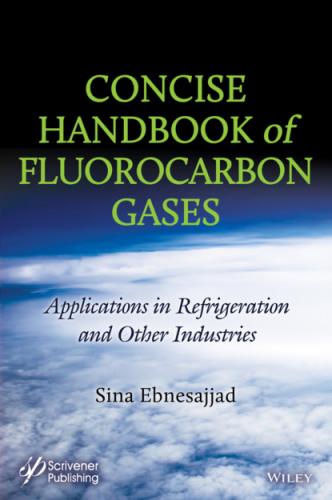The first nucleophilic replacement of another halogen by fluorine was attributed to a genius, the Russian musician and gifted chemist Alexander Borodin [16]. He synthesized benzoyl fluoride by replacement of chlorine in benzoyl chloride using Fremy’s Salt (KF+HF) [17]. The reaction, called halex (abbreviation for halogen exchange) has continued to be the most significant way to produce C–F bonds on a commercial scale [12].
The pioneering work of Belgian chemist Frederic Swarts breathed a new life into the lagging chemistry of aliphatic fluorine compounds. Swartz conducted halogen exchange on polychlorides and polybromides through the use of combined antimony trifluoride and bromine (SbF3 + Br2). He elucidated dehalogenation reaction using Zn and dehydrohalogenation using K2CO3 could selectively remove halogens other than fluorine leading to the formation of fluorinated olefins. Swarts has been credited with the first synthesis of CCl2F2 by Midgley and Henne of the Frigidaire Co. (part of General Motors), who pioneered the use of fluorinated hydrocarbons in the refrigeration industry [18, 19].
In the 1950s and 1960s, study of the fluorocarbons began leading to developments for biological activity. Fluorocarbons, for instance, such as Fluroxene® (CF3CH2OH=CH2) started a massive change in the types of inhalation anesthetics drugs. In the 1970s fluorocarbons became the agent of choice for inhalation anesthesiology. Other fluorocarbon related developments include artificial blood and respiratory fluids [18].
3.6 Synthesis of Fluorocarbons
Hydrogen fluoride has been called the lifeblood of the fluorochemical industry [20]. In a more general way, aliphatic fluorocarbons can be made using halogen-exchange by the reaction of HF with alkanes and chlorinated alkanes catalytically. This occurs because fluorine can displace any halogen in a substitution reaction. Commercially speaking the halogen choices consist mostly of chlorine and bromine.
One of the first reactions to prepare a chlorofluorocarbon was reported, by the Belgian chemist Swarts. Anhydrous HF and carbon tetrachloride were reacted using antimony pentachloride catalyst. The reaction, further developed by Midgley and Henner, produces fluorochloromethanes in which the ratio of products is determined by the reaction conditions [21].
(3.3)
Another reaction uses antimony trichloride and chlorine gas along with anhydrous HF; Eq (3.4) is an example of this reaction. In both reactions, antimony fluoride is produced in situ. Temperature and pressure of the reaction are 110°C and 30.4 bars [22]. A number of antimony halides are used as catalyst in chlorofluorocarbon synthesis. Reactivity of these salts is in the following order: SbF5 > SbF3Cl2 > SbF3/SbCl5 mixture > SbF3. Indeed, carbon tetrachloride used to be the feedstock for the production of R-11 and R-12 before the banning of both gases by the Montreal Protocol.
An important consideration in the halogen exchange of chlorine with fluorine, in chloroalkanes, is the ease of substitution at the onset of reactions like Eq. (3.4). As the number of fluorine atoms to chlorine-bearing atoms increases, it becomes increasingly more difficult to make further substitutions. The reason is the steric crowding in a compound such as CCl4 encourages removal of chlorine ions. But chlorine becomes a poor donor as the electron withdrawing power of the attached groups increases. Consequently, fluorination of CCl3-CCl3 (hexa-chloroethane) results in little of the asymmetric chlorofluoroethanes [23]. The disadvantage of CFCs, also called second generation refrigerants, is they have both high Global Warming and high Ozon Depletion potentials.
Third generation of refrigerants are based on hydrochlororo fluorocarbons (HCFC). One of the HCFC replacement gases for CFC-11 (R-11) and CFC-12 (R-12) was difluorochloromethane, R-22 (HCFC-22) per Eq. (3.5). It is also an intermediate in the preparation of tetrafluoroethylene, as seen in Eq. (3.6), an important monomer. The former reaction was conducted with SbCl3 catalyst [24].
HCFC’s like R-22 have ozone-depleting effect and had to be replaced. Hydrochlorofluorocarbons (HCFCs) were replaced with the third generation hydrofluorocarbons (HFCs) that have no impact on the ozone layer though they have large Global Warming Potential. Much of the chemistry developed for the manufacture of the CFCs was used for the production of HFCs [25–29]. Figure 3.7 shows two important industrial routes to HFC-134a in which chromium(III) catalysts are used in conjunction with HF for the halogen exchange steps [29].
While HFC-134a has been one of the global standard automotive air-conditioning refrigerants, it will not meet the European Union F-gas regulation. HFC-134a is being replaced by hydrofluoroolefin refrigerants (fourth generation) such as HFO-1234yf (CF3CF=CH2). HFC refrigerants are comprised of hydrogen, fluorine and carbon atoms connected by single bonds between the atoms. HFO refrigerants are composed of hydrogen, fluorine and carbon atoms, but contain at least one double bond between the carbon atoms. One benefit of HFO-1234yf is it has the potential to be used in current HFC-134a systems with minimal system modifications. The important characteristics of HFO-1234yf are listed below:
Figure 3.7 Two reactions to prepare 1,1,1 trifluoro-2, fluorodichloroethane [23].
Low toxicity
Low GWP; GWP = 4
Zero ozone-depletion potential
Low total contribution to climate change
Same operating pressures as current HFC-134a system
One method for preparation of HFO-1234yf involves feeding a mixture of chlorotrifluoroethylene (CTFE) with a methyl halide into a reactor at temperatures in the range 650-750°C. The mixture forms an intermediate stream producing HFO-1234yf precursors such as CF2=CFCH2Cl. It is then fed into a second reactor along with HF, which converts the precursors into HFO-1234yf. The second reactor contains fluorinated chromium oxide catalyst heated to 280-550°C [30].
This chapter provides a brief discussion of the basic chemistry of fluorocarbons. Additional descriptions of the chemistry of synthesis of commercial fluorocarbons are presented in the Chapter 6 of this book.
References
1. John’s, K. and Stead, G., Fluoroproducts-the extremophiles, J. Fluorine Chem., 104, 5, 2000.
2. Moissan,
